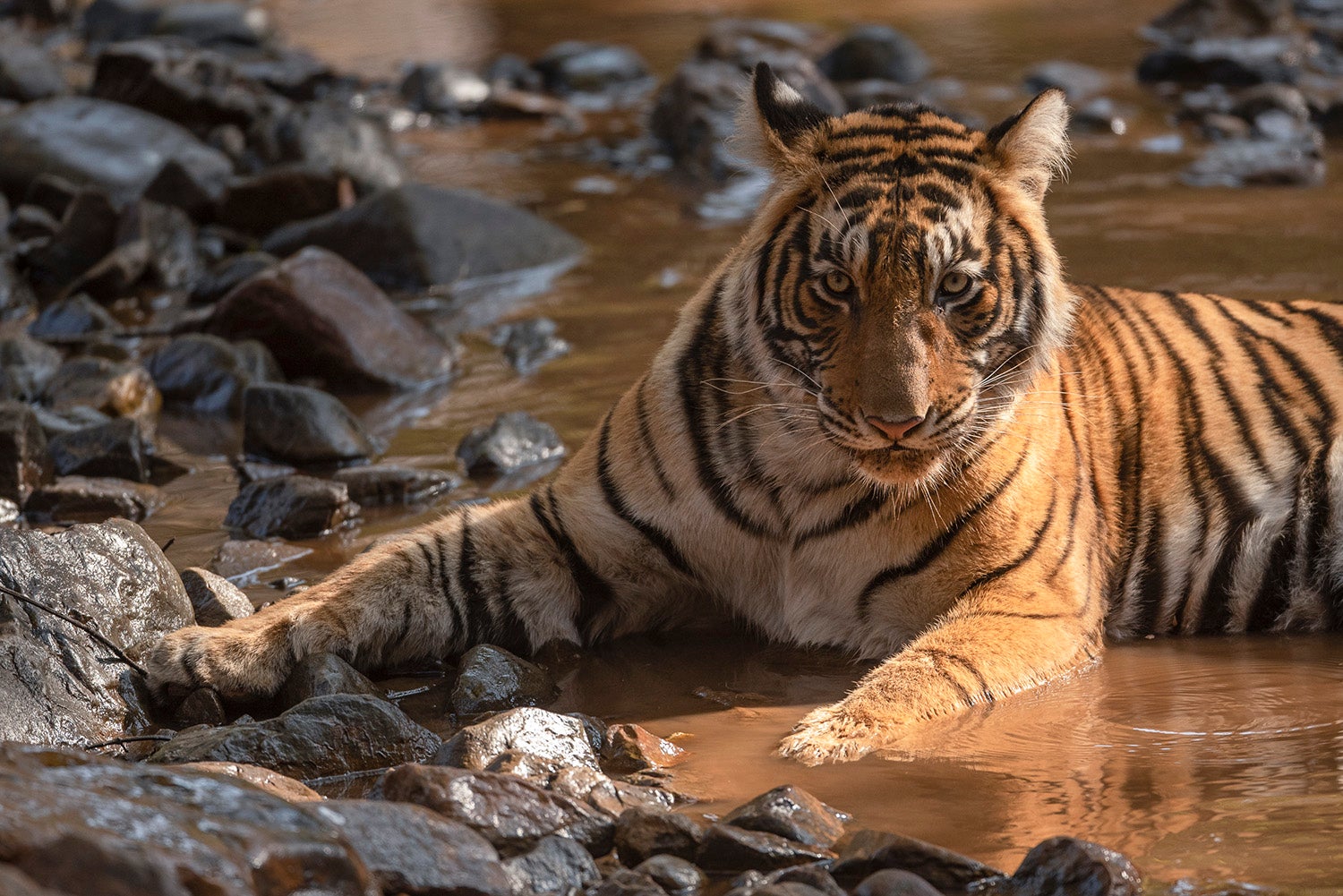April 10, 2019
Scant amounts of DNA reveal conservation clues, Stanford University researchers and their colleagues found
The challenges of collecting DNA samples directly from endangered species makes understanding and protecting them harder. A new approach promises cheap, rapid analysis of genetic clues in degraded and left-behind material, such as hair and commercial food products.
The key to solving a mystery is finding the right clues. Wildlife detectives aiming to protect endangered species have long been hobbled by the near impossibility of collecting DNA samples from rare and elusive animals. Now, researchers at Stanford and the National Centre for Biological Sciences at India’s Tata Institute of Fundamental Research have developed a method for extracting genetic clues quickly and cheaply from degraded and left-behind materials, such as feces, skin or saliva, and from food products suspected of containing endangered animals.

A wild tiger in Ranthambore Tiger Reserve, India. (Image credit: Prasenjeet Yadav)
Their proof of concept – outlined April 10 in Methods in Ecology and Evolution – could revolutionize conservation approaches and policies worldwide, the researchers said.
“It’s CSI meets conservation biology,” said co-author Dmitri Petrov, the Michelle and Kevin Douglas Professor in the School of Humanities and Sciences.
The specter of extinction hangs over more than a quarter of all animal species, according to the best estimate of the International Union for Conservation of Nature, which maintains a list of threatened and extinct species. Conservationists have documented extreme declines in animal populations in every region of Earth.
Clues from DNA
Helping species recover often depends on collecting DNA samples, which can reveal valuable information about details ranging from inbreeding and population history to natural selection and large-scale threats such as habitat destruction and illegal wildlife trade. However, current approaches tend to require relatively large amounts of DNA, or expensive and often inefficient strategies for extracting the material. Getting meaningful information rapidly from lower-concentration, often degraded and contaminated DNA samples requires expensive and specialized equipment.
A solution may lie in an ongoing collaboration between Stanford’s Program for Conservation Genomics, including the labs of Petrov and co-authors Elizabeth Hadly and Stephen Palumbi, with India’s National Centre for Biological Sciences, including the lab of co-author Uma Ramakrishnan, a molecular ecologist and former Fulbright faculty fellow at Stanford.
“I have been working on tiger conservation genetics for over a decade, but have been frustrated at how slow and unreliable the process of generating genetic data can be,” Ramakrishnan said. “Conservation needs answers fast, and our research was not providing them fast enough.”
The researchers looked at endangered wild tigers in India and overfished Caribbean queen conchs, examining tiger feces, shed hair and saliva found on killed prey, as well as fried conch fritters purchased in U.S. restaurants. All of the samples were too impure, mixed or degraded for conventional genetic analysis.
“Our goal was to find extremely different species that had strong conservation needs, and show how this approach could be used generally,” said Palumbi, the Jane and Marshall Steele Jr. Professor of Marine Biology. “The King of the Forest – tigers – and Queen of the Caribbean – conch – were ideal targets.”
Inexpensive and effective
Together, the team improvised a new approach, using a sequencing method that amplifies and reads small bits of DNA with unique differences in each sample. By doing this simultaneously across many stretches of DNA in the same test tubes, the researchers kept the total amount of DNA needed to a minimum. Making the procedure specific to tiger and conch DNA allowed for the use of samples contaminated with bacteria or DNA from other species.
The technology proved highly effective at identifying and comparing genetic characteristics. For example, the method worked with an amount of tiger DNA equivalent to about one-one-hundred-thousandth the amount of DNA in a typical blood sample. The method had a higher failure rate in conchs because the researchers did not have whole genomes at their disposal.
The approach’s effectiveness, speed and affordability – implementation costs could be as low as $5 per sample, according to the researchers – represents a critical advance for wildlife monitoring and forensics, field-ready testing, and the use of science in policy decisions and wildlife trade.
“It is easy to implement and so can be done in labs with access to more or less basic equipment,” said co-author Meghana Natesh of the National Centre for Biological Sciences and Sastra University in India. “If a standard procedure is followed, the data generated should be easy to share and compare across labs. So monitoring populations across states or even countries should be easier.”
The scientists have made their methods freely available. “We are working to expand the method so that it can identify other species and other characteristics, such as diet and pathogens,” Hadly said.
Petrov is also a member of Stanford Bio-X and the Maternal & Child Health Research Institute, as well as an affiliate of the Stanford Woods Institute for the Environment. Hadly and Palumbi are also members of Stanford Bio-X and senior fellows at the Stanford Woods Institute for the Environment. Ramakrishnan is also a senior fellow at the Wellcome Trust / DBT India Alliance. Other Stanford co-authors include postdoctoral scholars Ryan Taylor and Nathan Truelove. Taylor is currently a consultant at End2End genomics, which is developing the DNA method.
Funding for this research provided by the Wildlife Conservation Trust, the U.S. Department of State, the Wellcome Trust / DBT India Alliance, the Summit Foundation and the Smithsonian Institution.
To read all stories about Stanford science, subscribe to the biweekly Stanford Science Digest.
-30-
|